Breaking: National School Lunch Testing for Glyphosate, Pesticides, Heavy Metals and Hormones
National school lunch testing shows there are high amounts of GMOs, Glyphosate, Pesticides, Heavy Metals and Hormones in our school lunches. This is absolutely unacceptable and we urge you to share this information with everyone and contact your school officials, PTAs and representatives to demand better for our children. No wonder there are so many sick children and childhood diseases on the rise! Check out the full article as reported by Moms Across America. This is a highly comprehensive article–so please read it thoroughly and share with everyone. Thank you!
Thirty million genetically modified school meals are served daily in America to our children.
The testing of 43 school lunch samples shows:
- 95.3% of the school lunch items contained carcinogenic, endocrine disrupting, and liver disease-causing glyphosate.
- 74% of the samples contained at least one of 29 harmful pesticides.
- 4 Veterinary drugs and hormones were found in 9 school lunches samples at levels up to 130.76 ng/g.
- 100% of the school lunch samples contained heavy metals at levels up to 6,293 X higher than the EPA’s maximum levels allowed in drinking water.
- The majority of the samples were abysmally low in nutrients.
Many of these toxins have been found to contribute to or cause neurodevelopment disturbances, immune system damage, hormone disruption, cancer, liver disease, tumors, and more.
Without proper nutrients, our children’s brains will not function properly, and their bodies will not be developed as needed. Often children with learning and behavioral issues are deficient in just one or two minerals or vitamins; when those nutrients are added to their diet, their mental, physical, and behavioral issues subside. Even violent behavior is discontinued. Our children must have proper nutrient-dense food.
For millions of underserved children, school meals are the only meals they consume. School lunches contain many GM crop ingredients such as corn, soy, and sugar from sugar beets and are processed with GM oils such as canola and soybean oil. Most genetically modified crops are engineered to withstand toxic chemicals such as glyphosate, glufosinate, dicamba, and many more harmful chemicals.
The wheat, peas, beans, oats, and other grain ingredients found in school lunches, such as in hot dog and burger buns, bread crumb coating, pasta, pizza crusts, etc., are primarily derived from conventional crops that are often sprayed with glyphosate as a drying agent before harvest—this practice results in high levels of glyphosate residues in the foods. Thousands of food samples have been tested for glyphosate; we are unaware of such testing on school lunches.
The frequent use of these chemicals, for instance, 280 million pounds of glyphosate herbicides are used each year in the United States, has been shown to kill the microorganisms in the soil that are critical for soil health. Glyphosate also traps many minerals, depleting the soil of essential nutrients. Therefore, an increasing amount of fertilizers are required to grow crops—over 500 million pounds Of fertilizers were reported to be used in 2008. Many fertilizers are derived from manure from animals fed genetically modified grains sprayed with glyphosate and other petrochemicals. Studies have shown that these petrochemicals contain heavy metals, such as arsenic, cadmium, barium, and aluminum. The chemical residues, especially glyphosate, do not wash off. The heavy metals in the fertilizer leach into the soil, are taken up into the crop, and are found in wheat, corn, soy and many other food ingredients.

Baby food manufacturers have already detected high levels of heavy metals in six of the most popular baby food brands. The Congressional baby food report showed levels of arsenic as high as 913 ppb, cadmium at 344 ppb, and lead at 886 ppb. Heavy metals have been shown to cause mental retardation, neurocognitive disorders, behavioral disorders, ADHD, respiratory problems, cancer, and cardiovascular disease. There is no reason to believe that the same high level of heavy metals would not be in school lunch food as well.
The depletion of nutrients in the soil from agrochemicals results in nutrient-deficient crops. Preliminary testing on conventional foods resulted in “ embarrassingly low” nutrient levels, according to plant pathologist Don Huber, PhD., with sixty years of experience. We suspected that school lunch nutrient density is also extremely low. Testing for nutrients in school lunch food is a necessary step in ensuring the health of our children and the success of the future of our country.
Low nutrient levels in the grains fed to livestock animals could result in low growth rates and sickness. Farmers often inject dozens of medications, such as antibiotics, into their livestock to prevent or treat ailments. This practice is especially prevalent in Confined Animal Feeding Operations (CAFOs), where thousands of pigs, cows, or chickens are crammed into tiny, unsanitary spaces. Livestock farmers artificially stimulate growth by injecting livestock with growth hormones. These hormones can have adverse health impacts on consumers, disrupting the hormonal balance of humans consuming the meat and provoking adverse effects such as early menstruation in girls and the growth of belly fat and breast tissue in boys. An imbalance in hormones can also affect sleep and mood and can cause emotional outbursts and reduced attention span, causing behavioral and learning problems. Therefore, we initiated testing for 108 of the most concerning veterinary drugs and hormones, including antibiotics.
Testing school lunches for glyphosate, pesticides, heavy metals, hormones, and nutrients is something our federal government agencies should be doing. These test results should be made publicly available. Moms Across America is clear that the federal government is primarily in the pockets of Big Ag and Big Chem, so these actions are unlikely ever to be taken.
We thank all those in our Moms Across America network and Children’s Health Defense for donating to support the testing we just completed and are reporting today.
Glyphosate and AMPA (breakdown of glyphosate)
- Of the 44 school items tested, 41, or 93.4%, had detectable levels of glyphosate weed killer.
- The highest level of Glyphosate and AMPA (AMPA is glyphosate’s breakdown and can be even more toxic) were found in a beef taco with soft wheat tortilla at 286.77 ng/g and pizza at 156.14 ng/g.
- 28 of the 44 school meal samples, or 63.6%, contained wheat ingredients.
- 100% of the wheat products were positive with glyphosate, averaging 42.09 ng/g. The average level of glyphosate in pizza was 154.51 ng/g. Several items had very high glyphosate levels, well above 25 ng/g.
The link to the full report of glyphosate and AMPA testing in school lunches can be found here.
If consumed regularly, results with Total Effective Glyphosate above 25 ng/g could have harmful effects. These are levels that, if routinely fed to rats, cause them to show symptoms of Non-Alcoholic Fatty Liver Disease (NAFLD).
NAFLD is life-threatening and is an epidemic in the USA.6 These levels of glyphosate in school lunches would be expected to have similar effects on children. Levels lower than 25 ng/g can be expected to contribute to NAFLD and other pathologies because a child will eat more than one thing during the day that contains glyphosate, and the levels of glyphosate would be cumulative.
According to the American Liver Foundation
About 100 million individuals, or about 1 out of 3 people in the United States, are estimated to have Nonalcoholic Fatty Liver Disease.
Nonalcoholic Fatty Liver Disease (NAFLD) is children’s most common form of liver disease and has more than doubled over the past 20 years.
According to the Mayo Clinic:
Liver disease doesn’t always cause noticeable signs and symptoms. If signs and symptoms of liver disease do occur, they may include:
- Skin and eyes that appear yellowish (jaundice)
- Abdominal pain and swelling
- Swelling in the legs and ankles
- Itchy skin
- Dark urine color
- Pale stool color
- Chronic fatigue
- Nausea or vomiting
- Loss of appetite
- Tendency to bruise easily
The EPA must revoke the glyphosate license to remove glyphosate from the food supply and reduce the risk of NAFLD in our population. Allowing the continued use of glyphosate in our food supply and communities contributes significantly to rising health care costs and society’s detriment.
Pesticides
Moms Across America had the 43 school lunch samples tested for 220 of the most egregious pesticides, such as:
2,4-D, Atrazine, Carbaryl, Chlorpyrifos, Dicamba, Fipronil, Imidacloprid, Metoclor, Piperonal Butoxise, Pyrimenthanil, Simazine, Tetraconazole, Thiabendazole, and more.
- 74% of the school lunch samples contained at least one of the harmful pesticides
- 29 different types of pesticides were present in 74% of the school lunches
- Thiabendazole, an immune suppressant, was found in 27.9% of the samples
- Piperonal Butoxide, a developmental toxin that causes birth defects and neurodevelopment disruptions was in 41% of the samples.
- Pyrimethanil, which causes thyroid tumors in animals, was detected at 595.04 ppb on an apple.
Research on just three of the chemicals revealed alarming concerns of harm to the immune system, birth defects, neurodevelopment disruptions, and tumors:
Thiabendazole (TBZ) – present in 12 of the 43 samples (27.9%), was found at 176.28 ppb on a green apple and 34.99 ppb on a red apple. TBZ has immunosuppressive effects. A 2021 study concluded that “TBZ, MSG, and BB negatively affect hematological parameters and innate and humoral immune functions, and inflammatory responses. TBZ achieved the maximal negative impacts, followed by food additive MSG and BB. Given the prevalence of these food additives, TBZ and MSG should be limited to a minimal volume use, or natural food additives should be used instead.”
Piperonal Butoxide (PBO) – present in 18 of the 43 samples ( 41%), up to 41.96 ppb in a hamburger- is a developmental toxin or teratogen that can cause structural malformations including inhibition of the development of specific parts of the brain and forelimb and facial development. A 2019 study points out that a critical mechanism of action is to inhibit an essential developmental signaling pathway.
PBO is not a pesticide but a synergist that amplifies the pesticidal activity of many pesticides. It is therefore used in conjunction with many pesticides, resulting in broad exposure to humans. The fact that it is a synergist, not a pesticide, does not weaken concern about this chemical but increases it because it results in PBO being used much more widely and therefore results in higher exposure. If you get a little in this food, a little more in the next, and a little more in the next, it all adds up. Particularly expecting mothers should be careful because of the developmental toxicity of this compound. Prenatal PBO exposure can cause overt forebrain and face malformations or neurodevelopmental disruptions….this study defined the lowest observable effect level for PBO developmental toxicity in mice as more than 30-fold lower than previously recognized by the EPA and other agencies. Human exposure to PBO and its potential contribution to etiologically complex birth defects should be rigorously examined.
Pyrimethanil was detected at 595.04 ppb on an apple. A 2018 study on Pyrimethanil indicates that it produces thyroid follicular cell tumors in rats and upregulates hepatic thyroid hormone metabolism, which may be responsible for thyroid tumorigenesis (Hurlety, 1998 ).
The full report of the pesticide testing on school lunches can be found here.
Minerals
The lab testing showed that the majority of the samples were sorely deficient in appropriate amounts of minerals.
The link to the entire lab report for nutrient testing is found here.
Minerals are essential for bodily function. The following are just some of the specific ways minerals play a crucial role in human health and development.
Sodium: plays a variety of essential roles in the body. Sodium helps maintain healthy fluid balance and contributes to proper muscle contraction and nerve impulse conduction. Still, the body needs far less sodium than the average person consumes — and the importance of sodium is negated when too much of the salty stuff fills the bloodstream.
Potassium: is necessary for the normal functioning of all cells. It regulates the heartbeat, ensures proper muscle and nerve function, and is vital for synthesizing protein and metabolizing carbohydrates.
Iron: is essential in making hemoglobin, an oxygen-carrying protein in red blood cells. These red blood cells help carry oxygen throughout your body. Six percent of iron can also be found in other essential proteins, and another 25% is stored in your body in a blood protein called ferritin. Iron is also vital for a fully functioning immune system. If your iron levels are too high or too low, they can cause serious health problems.
Calcium: is vital for overall health. Almost every cell in our body uses calcium in some way. Calcium is key to the proper functioning of our nervous system, muscles, heart, and bone. Our bones store calcium in addition to providing support for our bodies. As we age, we absorb less and less calcium from our diet, causing our bodies to take more and more calcium from our bones. Over time this aging process can cause or contribute to osteopenia or osteoporosis.
Phosphorous: an essential mineral, is naturally present in many foods and available as a dietary supplement. Phosphorus is a component of bones, teeth, DNA, and RNA. In the form of phospholipids, phosphorus is a component of cell membrane structure and the body’s essential energy source, ATP. Many proteins and sugars in the body are phosphorylated. In addition, phosphorus plays key roles in regulating gene transcription, activating enzymes, maintaining normal pH in extracellular fluid, and storing intracellular energy.
Magnesium: is the fourth most abundant mineral in your body; it is involved in over 600 cellular reactions, from making DNA to helping your muscles contract. Low magnesium levels have been linked to many adverse health outcomes, including weakness, depression, high blood pressure, and heart disease.
Nitrogen: is one of the main body components required for protein synthesis and production of several nitrogenous compounds such as hormones, neurotransmitters, and components of antioxidant defense.
Manganese: contributes to many bodily functions, including the metabolism of amino acids, cholesterol, glucose, and carbohydrates. It also plays a role in bone formation, blood clotting, and reducing inflammation.
Boron: is especially important for your metabolism and other functions that involve maintaining homeostasis. Boronninduces the mineralization activity of what’s called your osteoblasts. Osteoblasts are a type of cell that creates new material to rebuild bones. Boron activates these cells by regulating gene expression.
Copper is an essential trace mineral. That means, in trace amounts, it isn’t merely important for your health – it’s crucial for survival. Copper is critical for higher metabolic activity in the liver, kidneys, brain, and heart.
Zinc: is an essential mineral found in every cell of the human body. It is needed for the proper functioning of hundreds of enzymes, and it plays a role in immune function, cell growth, and wound healing. Zinc is also necessary for the sense of smell and taste.
Heavy Metals
Arsenic, calcium, lead, mercury
- 100% of the school lunch samples contained heavy metals at levels up to 6,293 X higher than the EPA’s maximum levels allowed in drinking water.
- The levels ranged from 0.5 ppb to 94.4 µg/kg.
- The highest levels of heavy metals were Cadmium (Cd) and Lead ( Pb), found at up to 46.8 µg/kg of cadmium and 94.4 µg/kg of lead.
Arsenic – 0.010 ug/kg – Skin damage or problems with circulatory systems, and may have increased risk of getting cancer
Cadmium – 0.005 ug/kg – can cause kidney damage.
Lead – 0.015 ug/kg – Infants and children: Delays in physical or mental development; children could show slight deficits in attention span and learning abilities. Adults: Kidney problems; high blood pressure
Mercury – 0.002 ug/kg – Kidney damage
Heavy metals are a known danger to the brain development of children.
A 2019 study finds that: Heavy metals “harmful consequences for children’s health include mental retardation, neurocognitive disorders, behavioral disorders, respiratory problems, cancer, and cardiovascular diseases. Much attention should be given to heavy metals because of their high toxicity potential, widespread use, and prevalence. This review, therefore, examines the exposure routes and health effects of mercury (Hg), lead (Pb), chromium (Cr), cadmium (Cd), and barium (Ba) on children.”
The entire lab report for heavy metals can be found here.
Veterinary Drugs and Hormones
The 108 drugs and hormones include multiple antibiotics, ionophores, antiprotozoal, antifungals, coccidiostat, pain medicines, steroids, synthetic hormones, growth promoters, and other chemicals.
Testing specifically included amoxicillin, butorphanol, ciprofloxacin, clopidol, cloxacillin, difloxacin, doxycycline, fenbendazole, ketamine, norfloxacin, penicillin, prednisone, tetracycline, and more.
4 Veterinary drugs and hormones were found in 9 school lunch samples at levels up to 130.76 ng/g.
The entire lab report for Veterinary drugs and hormones in school lunches can be found here.
Long-term exposure to hormones in foods is claimed to pose serious health problems like heart problems, memory decline, and infertility.
A 2018 article in Healthfully states: “Eighty percent of U.S. cows are injected with hormones to increase their size, lean meat production, and feed use efficacy. Although the European Union stopped buying U.S. meat in 1985 due to hormone use, public opinion on its safety remains torn. U.S. cattle and sheep are fed, implanted, or injected with hormones. Unless store-purchased meat is marked with USDA Organic Certified, there is a chance it contains residual hormones.”
Early onset of puberty, increasing incidence of twin births, and reproductive problems have all been blamed on the hormones in meat. Opponents to hormone use suggest that these growth hormones are linked to cancers, such as breast and uterine cancer, and developmental problems in children.
Why glyphosate, pesticides, hormones, heavy metals, and low nutrient levels are especially a problem for children
Children are especially vulnerable to toxins. Studies show that children absorb more heavy metals than adults resulting in potentially permanent brain damage, developmental delays, and reproductive issues.
Statistics on children and pesticides show a drop in IQ.
A study from the Center for the Health Assessment of Mothers and Children of Salinas (CHAMACOS) cohort found an association between prenatal pesticide exposure and attention problems in children at age 5.
Researchers at the University of California, Berkeley’s School of Public Health found that every tenfold increase in measures of organophosphates detected during a mother’s pregnancy corresponded to a 5.5 point drop in overall IQ scores in 329 7-year-olds followed since birth. Children in the study with the highest levels of prenatal pesticide exposure scored seven points lower on a standardized measure of intelligence compared with children who had the lowest levels of exposure.
“These associations are substantial, especially when viewing this at a population-wide level,” said study principal investigator Brenda Eskenazi, UC Berkeley professor of epidemiology and of maternal and child health. “That difference could mean, on average, more kids being shifted into the lower end of the spectrum of learning, and more kids needing special services in school.”
According to a New America article, special education costs are rising up to
in some California schools.
In the 2005-2006 academic year, California schools reported special education expenditures of roughly $8.5 billion. In 2015-16 that had grown to about $13.2 billion. That’s a 55 percent increase in 10 years.
During this time is when the use of herbicides in agriculture skyrocketed. Another area of concern is artificial hormones which can have detrimental impacts on human health. According to the Health newsletter:
A 2009 study found that children who consumed the most protein from animal sources entered puberty about seven months earlier than those who consumed the least. “It doesn’t matter so much if it’s milk, cheese, or meat—all these animal proteins have a clear impact on [our] IGF system,” says Thomas Remer, Ph.D., one of the authors of the study and a professor at the Research Institute of Child Nutrition, in Germany.
In a 2004 study, patients with above-average IGF levels had nearly a 50% higher risk of prostate cancer and a 65% higher risk of hormone-dependent premenopausal breast cancer than people with below-average levels.
These health and learning issues put an enormous financial burden on families, school systems, and the federal government. The current national health care budget was over 4 trillion dollars in 2020, 4X times higher than the military and any industrialized nation.
The most critical time for Americans to consume toxin-free, nutrient-dense food is in the womb, as an infant, and in elementary and high school. An article from 2010 points out that military personnel called out the state of school lunches as a “national security issue,” citing the levels of obesity in children as prohibitive to the growth of the military and the security of our nation.
“When over a quarter of young adults are too fat to fight, we need to take notice,” Barnett said. He noted that national security in the year 2030 is “absolutely dependent” on reversing child obesity rates.
Recent research has shown that chemical agents in our food can affect our metabolism and trigger the body to add unneeded weight. According to Harvard’s School of Public Health, a factor contributing to the obesity epidemic is our exposure to obesogens.
The term obesogen was coined in 2006 to refer to industrial chemicals and the non-caloric components of food that may contribute to weight gain.
Our nation, if it wants to continue to be a Superpower, leading the world in technology, innovation, economic growth, and military might, MUST turn its attention to the health of our children, the future leaders of our country. WE must eliminate toxins from school lunches and we must improve the nutritional value of those lunches.
The frightening alternative of a future with widespread physical and mental health debilitation is already fast approaching; Dr. Nancy Swanson’s analysis of glyphosate and autism in children shows a 98.93.% correlation. Dr. Stephanie Seneff, an MIT scientist and author of Toxic Legacy, utilizing Swanson’s studies, predicts that 1 out of 2 children born in America in 2032 will be diagnosed with autism.
To reverse this debilitating trend, policymakers, parents, and physicians must take action to reduce the exposure to toxic chemicals and increase the intake of nutrients in school lunches immediately.
Studies have shown that nutrients, sometimes even just one nutrient, can completely reverse behavioral issues.
Without specific vitamins, the brain will not function properly, and humans will not make rational decisions. In addition, vitamin and mineral deficiency is connected to many illnesses and conditions. According to a Smithsonian magazine article, when hamsters in France were fed high-yield corn that was sprayed with pesticides and herbicides (most likely glyphosate), they became deficient in Vitamin B3 and cannibalistic, eating their own young. The cannibalistic behavior stopped completely when Vitamin B3 was introduced into their diet. Glyphosate is a chelator, meaning it holds or makes unavailable the vital nutrients of any living thing it touches. This leads to vitamin and mineral deficiency. The function of glyphosate and the lack of nutrients in our food supply points to glyphosate making the majority of the American public vitamin deficient, contributing to violent behavior. Our children deserve better. Our country deserves better.
Moms Across America asserts that our toxic food supply and its lack of nutrients, specifically school meals, is a major contributing factor to our children’s and our nation’s mental and physical health decline. We call for school lunch providers to immediately source fresh, organic, and regeneratively grown ingredients to supply safe, clean, toxin-free, nutrient-dense food to the children of our great nation.
About the Testing
The primary testing was conducted at Health Research Institute Laboratories in Fairfield, Iowa.
The methodology of each test can be found on their website.
18 Moms Across America supporters’ children purchased and brought home a school lunch in an unused plastic bag. Each parent signed a form confirming the sample was untampered and uncontaminated. Each sample was sent frozen by 1-2 day shipping directly to the laboratory. The supporters (except for one) paid for their shipping costs. No supporter was compensated for gathering the samples or tampering with the samples in any way.
Because these samples are from a national school lunch program, Moms Across America chooses not to disclose the school location. The school system relies on the government to establish policies that will improve the entire federal program. Although the schools can source foods from other sources, the federal program makes this process very difficult. Moms Across America is advocating for nationwide change on a national level.
The samples were gathered from the following 18 cities in 15 states:

We wish to thank the parents, especially the children, who participated in this initiative.
We ask all concerned citizens to contact their Congress members and the USDA to demand that they take immediate action to provide safe, nutrient-dense food to our nation’s children.
Click here to send a letter to our government today.
Note: The data on this report is still under review, and additional assessments may be added.
Sources
- https://www.soilassociation.org/media/7202/glyphosate-and-soil-health-full-report.pdf
- https://www.ers.usda.gov/topics/farm-practices-management/fertilizers-pesticides/
- https://www.momsacrossamerica.com/arsenic_and_heavy_metals_found_in_world_s_most_popular_weed_killer
- https://www.consumerreports.org/food-safety/heavy-metals-in-baby-food-a6772370847/
- Mesnage et al. Multiomics Reveal … https://www.nature.com/articles/srep39328
- https://liverfoundation.org/liver-diseases/fatty-liver-disease/nonalcoholic-fatty-liver-disease-nafld/
- Heavy metals and children https://pubmed.ncbi.nlm.nih.gov/30941546/
- Chamacos study https://news.berkeley.edu/2010/08/19/pesticide/
- https://news.berkeley.edu/2011/04/20/prenatal-pesticide-exposure-lower-iq/
- https://www.newamerica.org/weekly/special-education-costs-are-rising/
- https://doi.org/10.1016/j.intimp.2021.107902
- https://ehp.niehs.nih.gov/doi/10.1289/EHP5260
- https://www.sciencedirect.com/topics/agricultural-and-biological-sciences/pyrimethanil
- https://www.health.com/food/hormones-in-food-should-you-worry
- https://www.health.com/condition/breast-cancer/early-symptoms-breast-cancer
- https://publichealth.jhu.edu/2019/us-health-care-spending-highest-among-developed-countries
- https://www.cleveland.com/healthfit/2010/04/military_officers_group_says_s.html
- Harvard Obesity study https://www.hsph.harvard.edu/obesity-prevention-source/obesity-causes
- https://www.researchgate.net/figure/Correlation-between-children-with-autism-and-glyphosate-applications_fig2_283462716
- https://www.smithsonianmag.com/smart-news/corn-diet-turns-french-hamsters-cannibals-180961987/
- https://detoxproject.org/glyphosate/glyphosate-chelating-agent/
- Hormones in Food https://www.health.com/food/hormones-in-food-should-you-worry
Food Integrity Now thanks Moms Across America and everyone who collaborated in the important testing and article. We applaud you for your tenacity and integrity and for raising awareness to help protect our children. Everyone please SHARE this article with everyone you know!
Also, please check our out health store for some of your nutritional needs. We thank you for your support!





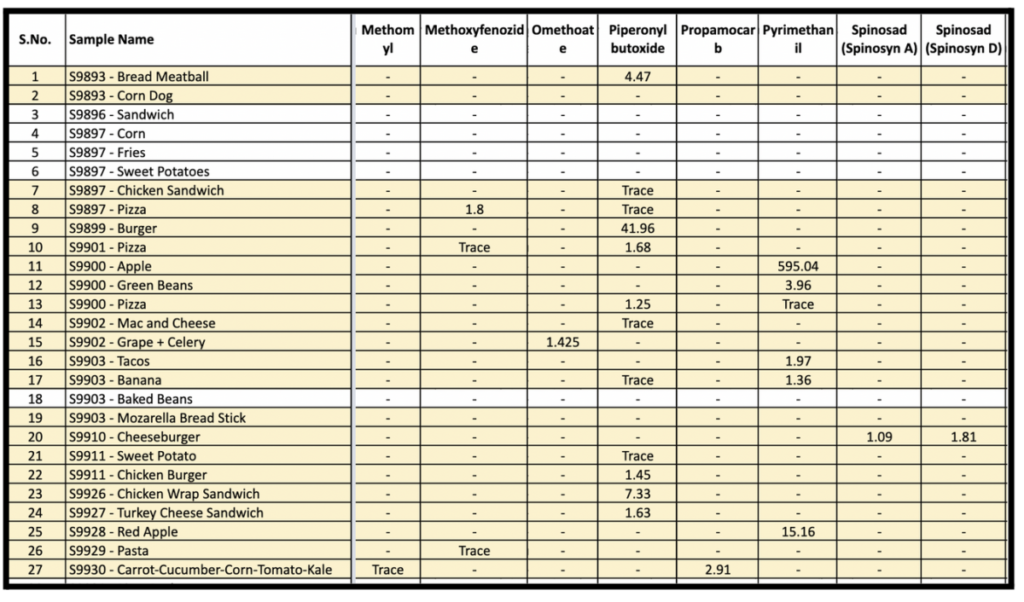

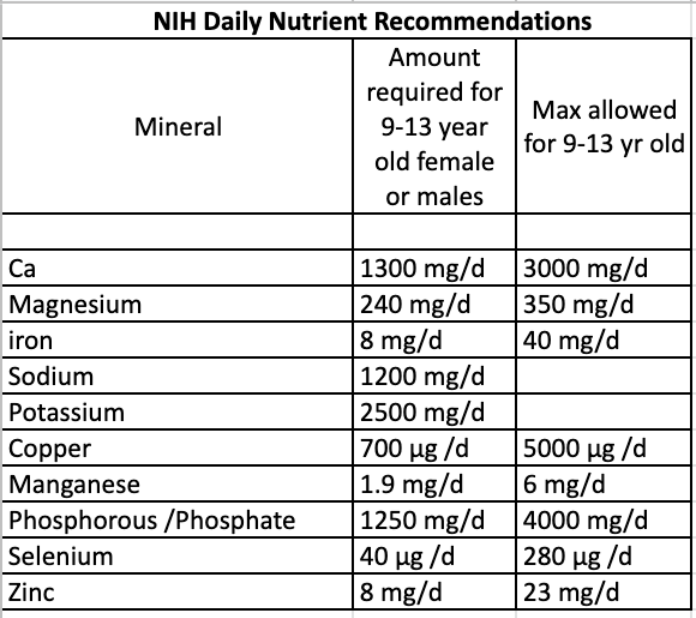

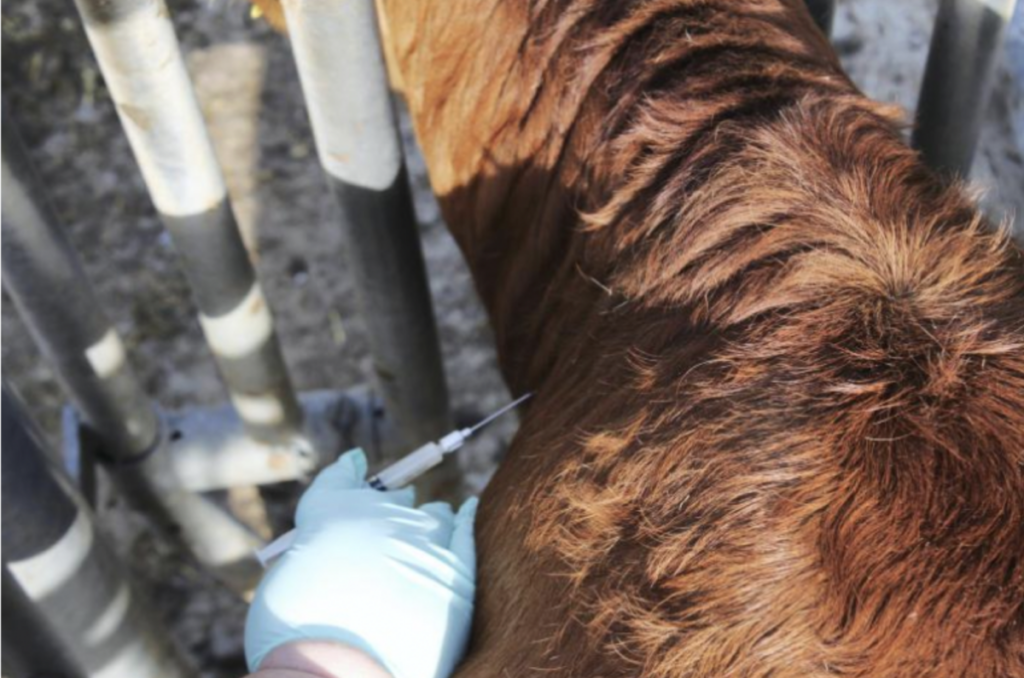
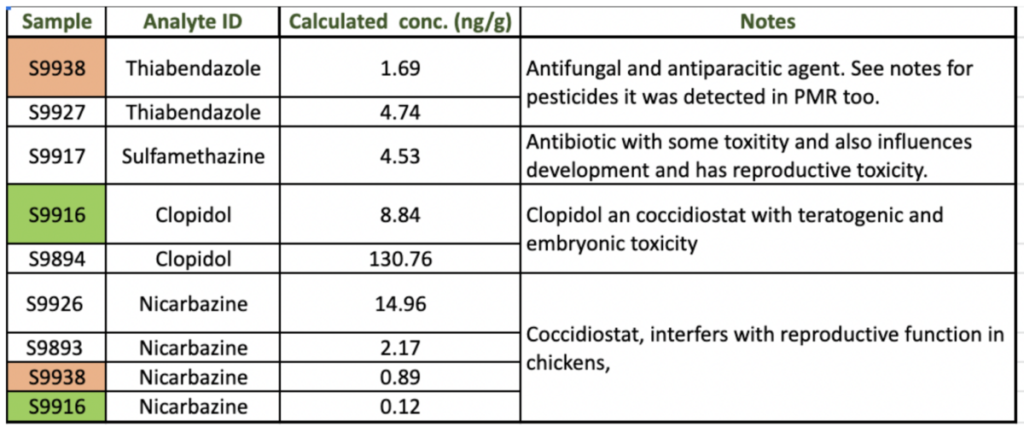


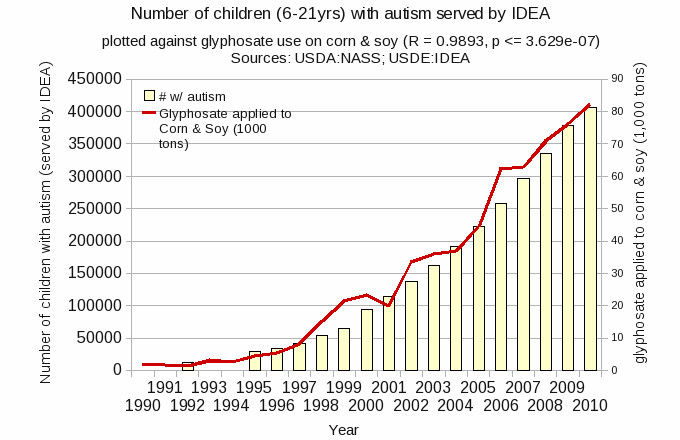
0 Comments